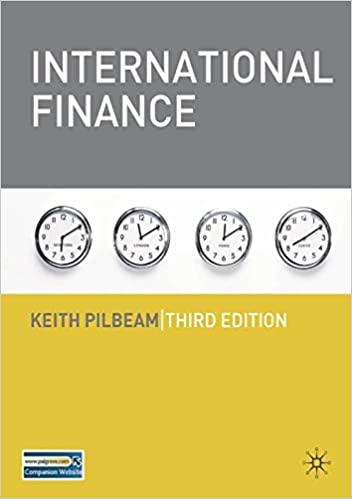Answered step by step
Verified Expert Solution
Question
1 Approved Answer
A firm produces electrically - assisted e - bikes. Currently, it produces a hybrid ( $H$ ) model, which recharges the battery using the cyclist
A firm produces electricallyassisted ebikes. Currently, it produces a hybrid $H$ model, which recharges the battery using the cyclists peddling energy. It has recently developed plans to switch to producing a plugin $P$ model whose battery must be charged from an EV charging socket. The firm is aware that the government is thinking about subsidising enhancements to the UKs charging infrastructure, which would increase demand for the $P$ model this decision will be taken at the beginning of year will take effect immediately and cannot be reversed. Currently, the firm estimates the associated costs and revenues as shown in the following Table. Annual costs for the $H$ and $P$ technologies are denoted $CH$ or $CP$ revenues from model $iinleftHPright$ in state $kinleftSNright$ for Subsidy $S$ or No subsidy $N$ are denoted $Rki$tabletablesetup cost
If the firm switches to the plugin $P$ model now, the new facility will not come onstream till next year; this year, the firm will pay the setup cost $SC$ and the annual cost $CH$ of producing the existing Hybrid $H$ model and get revenues $RNH$ From next period onwards, the firm will pay annual cost $CP$ and get the relevant revenues depending on the government's decision regarding the subsidy policy
The firms share price is correlated with the government decision as shown in the above table. After next period, the firm continues producing the chosen model $H$ or $P$ foIf the firm decides this year before the government decision is known what are the NPVs for the firm if i it stays with $H$ or ii it switches to $P$ using the riskless rate for discounting? Which would the firm choose? firm produces electricallyassisted ebikes. Currently, it produces a hybrid $H$ model, which recharges the battery using the cyclists peddling energy. It has recently developed plans to switch to producing a plugin $P$ model whose battery must be charged from an EV charging socket. The firm is aware that the government is thinking about subsidising enhancements to the UKs charging infrastructure, which would increase demand for the $P$ model this decision will be taken at the beginning of year will take effect immediately and cannot be reversed. Currently, the firm estimates the associated costs and revenues as shown in the following Table. Annual costs for the $H$ and $P$ technologies are denoted $CH$ or $CP$ revenues from model $iinleftHPright$ in state $kinleftSNright$ for Subsidy $S$ or No subsidy $N$ are denoted $Rki$
If the firm switches to the plugin $P$ model now, the new facility will not come onstream till next year; this year, the firm will pay the setup cost $SC$ and the annual cost $CH$ of producing the existing Hybrid $H$ model and get revenues $RNH$ From next period onwards, the firm will pay annual cost $CP$ and get the relevant revenues depending on the government's decision regarding the subsidy policyforever
a If the firm decides this year before the government decision is known what are the NPVs for the firm if i it stays with $H$ or ii it switches to $P$ using the riskless rate for discounting? Which would the firm choose?
b Using the share price, compute the WACC corresponding to sticking with the H model. Using this for discounting, what are the NPVs for each model and which would the firm prefer?
c Using the WACC computed in part b how much would the company be willing to pay for an option to delay the model choice until next year, once the governments subsidy decision is known assume the setup cost is paid when the decision is taken, one period before the new revenue stream starts

Step by Step Solution
There are 3 Steps involved in it
Step: 1

Get Instant Access to Expert-Tailored Solutions
See step-by-step solutions with expert insights and AI powered tools for academic success
Step: 2

Step: 3

Ace Your Homework with AI
Get the answers you need in no time with our AI-driven, step-by-step assistance
Get Started


